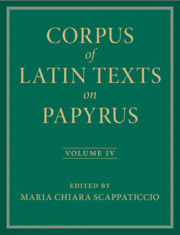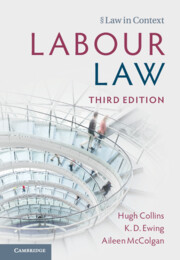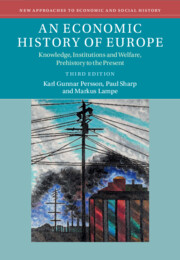Refine listing
Actions for selected content:
1294984 results in Books

Corpus of Latin Texts on Papyrus
-
- Published online:
- 03 October 2025
- Print publication:
- 04 September 2025

Deep Learning in Quantitative Trading
-
- Published online:
- 03 October 2025
- Print publication:
- 30 October 2025
-
- Element
- Export citation

Labour Law
-
- Published online:
- 02 October 2025
- Print publication:
- 20 November 2025
-
- Textbook
- Export citation

The Cambridge Companion to American Prison Writing and Mass Incarceration
-
- Published online:
- 02 October 2025
- Print publication:
- 02 October 2025

An Economic History of Europe
- Knowledge, Institutions and Welfare, Prehistory to the Present
-
- Published online:
- 02 October 2025
- Print publication:
- 02 October 2025
-
- Textbook
- Export citation

Bach: The Cello Suites
-
- Published online:
- 02 October 2025
- Print publication:
- 11 September 2025

Engineering Physics
- Fundamentals and Applications
-
- Published online:
- 02 October 2025
- Print publication:
- 31 December 2025
-
- Textbook
- Export citation
France, Italy, and Iberia
- from Part II - Traditions
-
- Book:
- The Cambridge Guide to Global Medieval Travel Writing
- Published online:
- 03 October 2025
- Print publication:
- 02 October 2025, pp 303-392
-
- Chapter
- Export citation
Tables
-
- Book:
- An Economic History of Europe
- Published online:
- 02 October 2025
- Print publication:
- 02 October 2025, pp ix-ix
-
- Chapter
- Export citation
7 - A Puzzle for Both Accounts
-
- Book:
- Linguistic Illusions
- Published online:
- 30 October 2025
- Print publication:
- 02 October 2025, pp 106-121
-
- Chapter
- Export citation
Dedication
-
- Book:
- The Cambridge Introduction to Ernest Hemingway
- Published online:
- 15 September 2025
- Print publication:
- 02 October 2025, pp v-vi
-
- Chapter
- Export citation
5 - Measuring Hierarchy
-
- Book:
- Hierarchy and the State
- Published online:
- 20 August 2025
- Print publication:
- 02 October 2025, pp 97-116
-
- Chapter
- Export citation
2 - Secret-Keepers and Mythmakers
- from Part I - Struggle to Conceal
-
- Book:
- Curating the Colonial Past
- Published online:
- 12 September 2025
- Print publication:
- 02 October 2025, pp 58-86
-
- Chapter
- Export citation
Chapter 25 - Moral Emotions
- from Section VI - Social Emotions
-
-
- Book:
- The Cambridge Handbook of Human Affective Neuroscience
- Published online:
- 16 September 2025
- Print publication:
- 02 October 2025, pp 503-522
-
- Chapter
- Export citation
7 - Money, Credit and Banking
-
- Book:
- An Economic History of Europe
- Published online:
- 02 October 2025
- Print publication:
- 02 October 2025, pp 155-177
-
- Chapter
- Export citation
Works Cited
-
- Book:
- The Cambridge Introduction to Ernest Hemingway
- Published online:
- 15 September 2025
- Print publication:
- 02 October 2025, pp 191-197
-
- Chapter
- Export citation
Acknowledgments
-
- Book:
- Linguistic Illusions
- Published online:
- 30 October 2025
- Print publication:
- 02 October 2025, pp xv-xvi
-
- Chapter
- Export citation
Contributors
-
- Book:
- The Cambridge Handbook of Human Affective Neuroscience
- Published online:
- 16 September 2025
- Print publication:
- 02 October 2025, pp xii-xiv
-
- Chapter
- Export citation
Figures
-
- Book:
- Building Social Mobility
- Published online:
- 15 September 2025
- Print publication:
- 02 October 2025, pp xi-xii
-
- Chapter
- Export citation
Chapter 22 - The Holy Roman Empire
- from The Empire and Central Europe
-
-
- Book:
- The Cambridge Guide to Global Medieval Travel Writing
- Published online:
- 03 October 2025
- Print publication:
- 02 October 2025, pp 395-409
-
- Chapter
- Export citation
